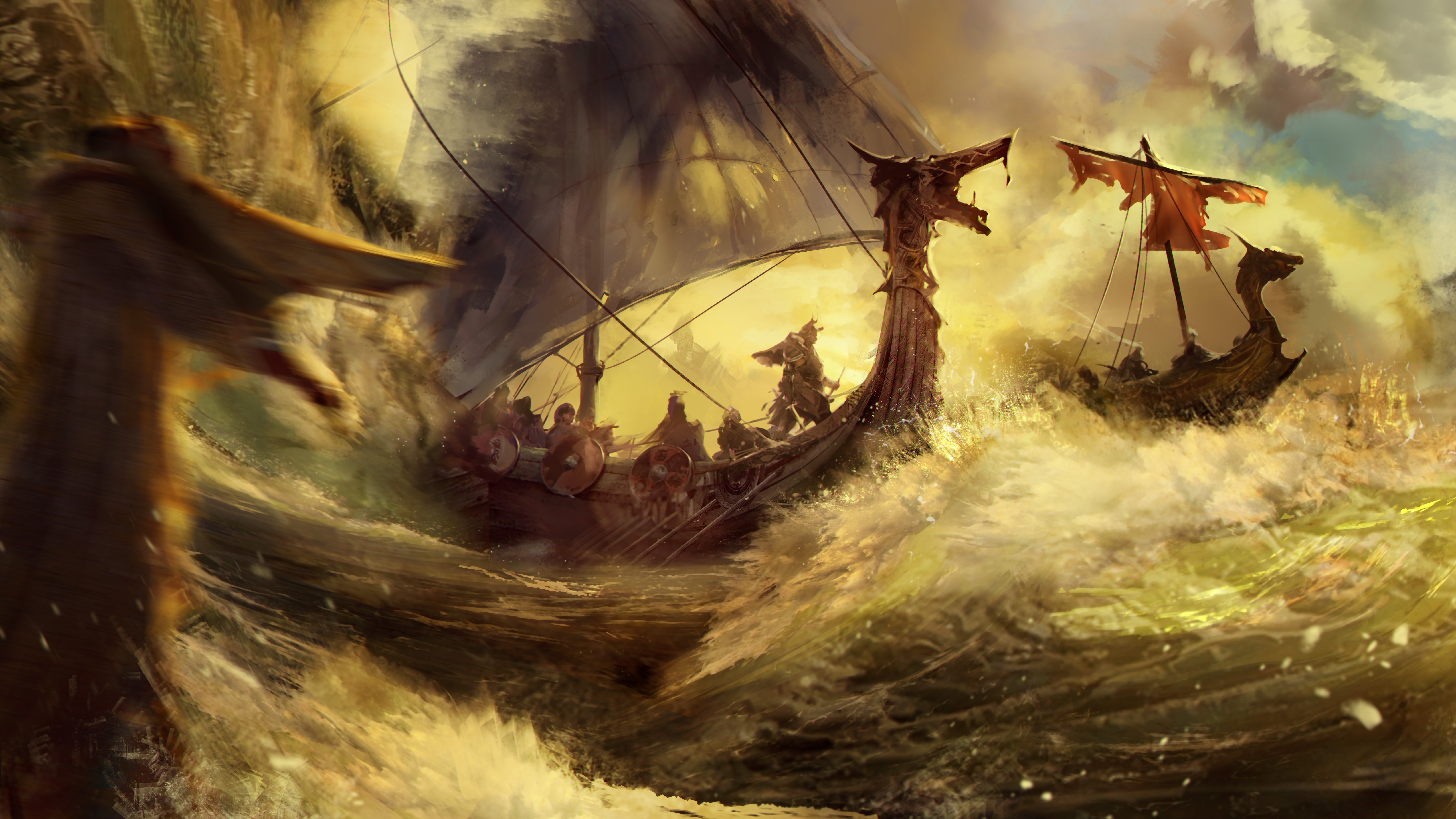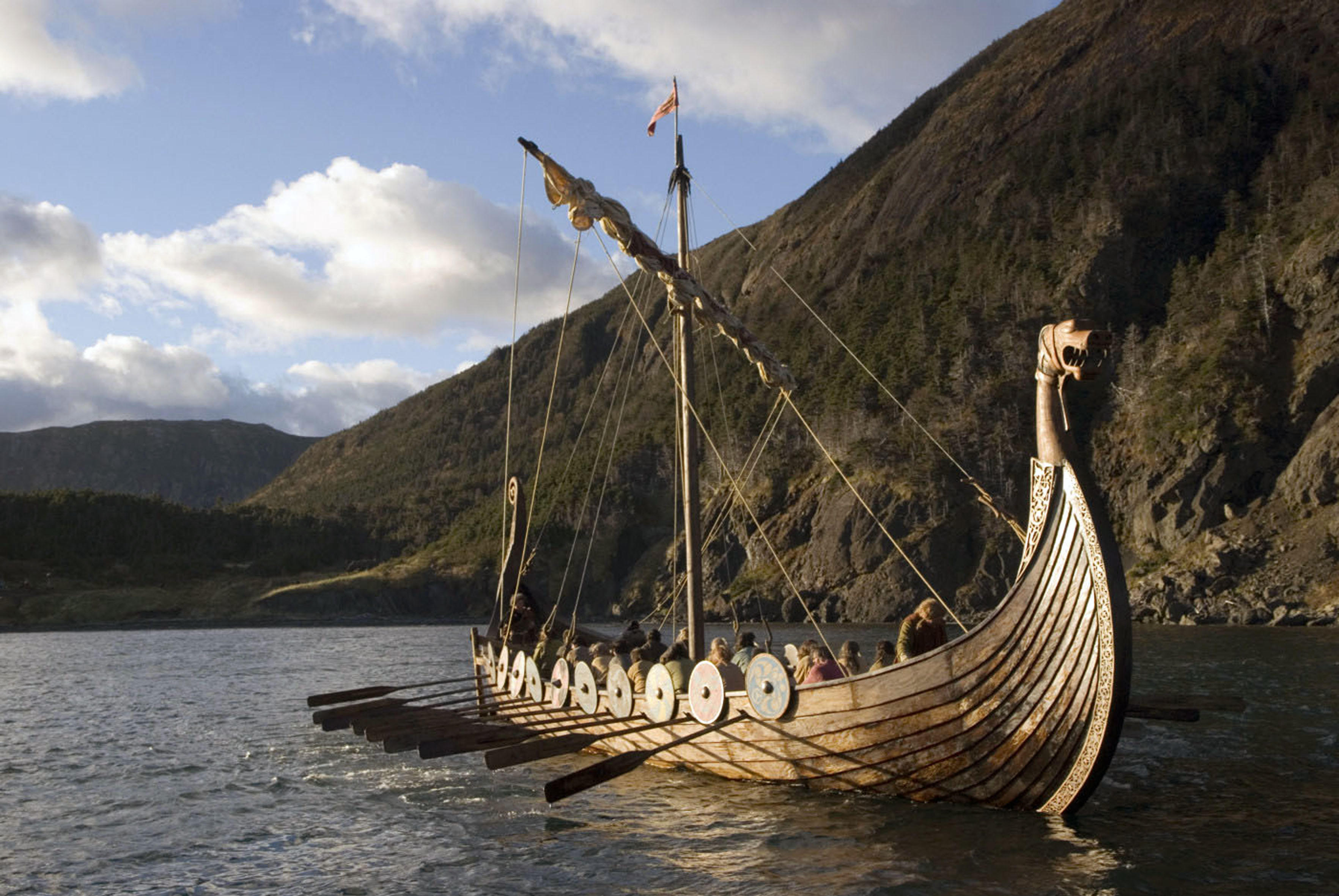Journal #2
A Viking Heritage
From seafaring culture to pioneering design, the Vikings’ lasting legacy of maritime prowess and quest for adventure lies at the heart of J Craft
Words by: Robert Ryan

It might seem fanciful to draw a direct line between an ultra-modern, ultra-sophisticated, ultra-desirable state-of-the art J Craft Torpedo and the legendary, dragon-prowed longship of the Vikings, but the links are there for all to see if you care to look closely enough. However, before we investigate those connections, we need to be clear about what we mean by “Vikings”.
For the majority of people, most of what we know about this marauding group of “sea wolves” comes from classic films and recent TV shows. We might assume from those portrayals that Vikings were unremittingly cruel, bloodthirsty, vengeful, superstitious, quarrelsome, untrustworthy and in thrall to gods who prized death in battle above all else. Well, yes, that sounds about right. But we must also remember that the entire population of what is now Norway, Denmark and Sweden didn’t all leap into longboats to go off pillaging. Someone had to raise the crops and children, fish, hunt, brew the mead, forge the weapons and build those remarkable ships that were used to discover and indeed conquer a vast swathe of Europe and beyond. The rapacious, plunder-mad warriors who went to sea were actually a minority of the Northlands population.
Nor were these raiders always a homogenous group, more an ad hoc coming together of disparate factions from neighbouring villages, often under a strong leader, and equally likely to disband once the spoils of piracy had been divided. Viking in-fighting was not uncommon. In fact, in the mid-ninth century, a bloody civil war raged between the Norwegians and the Danes – over the control of Dublin.
There was a degree of specialisation, too. It was mainly the Norwegians who struck out west on those epic voyages to the Faroes, Iceland, Greenland and eventually the shores of Vinland, part of the future North America – today, the Canadian province of Newfoundland and Labrador. The Danes liked to plague the English coast, the Frankish lands (of Germany) and sail up French rivers in search of easy pickings. The Swedes, on the other hand, looked to the east, across the Baltic. And rather than set out to conquer strange new worlds, they were more interested in good old-fashioned trade.

Not that the Swedish Vikings were exactly peace-loving softies. Gotland – where J Craft is based – is believed by some historians to be one of the regions that gave us the Goths, who sacked Rome in the fifth century and went on to control Italy, parts of France and much of Spain. But 300 years later the majority of Swedes, including the inhabitants of Gotland, decided that commerce was the future of sea power.
By the thirteenth century, Gotland held a key position in the Hanseatic League – a German-led free-trade union that operated across swathes of Northwestern Europe and the Baltic Seas, and an ancient forerunner to today’s European Union and indeed NATO, as it represented an economic union as well as a military one. German merchants settled in Visby – capital of Gotland and home to the J Craft boatyard – to protect and take advantage of its strategic position at the epicentre of international commerce in the Baltics. Today, Visby is a designated UNESCO world heritage site, recognised as ‘the best-preserved fortified commercial city in northern Europe’, and this significant chapter of its storied history is still reflected in the medieval, primarily German architecture that housed the wealthy merchants of that time.
Just as it is a mistake to lump all Norsemen together, so there is no such thing as a single type of longship. They varied from region to region and even from local shipyard to shipyard. They did have certain things in common though – longships were sleek and highly maneuverable with a useful symmetry (the bow and stern were more or less identical), which gave the crew the ability to reverse out of trouble at maximum speed. The longship’s versatility and adaptability gave the Vikings many stealthy advantages. Just as a J Craft is as at home on the Baltic sea as it is on a tranquil Mediterranean lake, the Viking longboats were simultaneously rugged enough to endure ocean crossings, small and light enough to travel up rivers to surprise the inhabitants of in-land destinations, and fast enough to escape again without capture, as well as spacious enough to carry large loads of goods.

The Scandinavian shipwrights were nothing if not innovative, improving on the clinker-built (overlapping planks) designs that they inherited from the Romans by adding metal nails for extra strength. Then, some time in the eighth century, they came up with one of the great maritime breakthroughs – they invented the keel. This gave the vessel vital stability in rough weather, making those perilous sea voyages possible (if not exactly pleasant, given the crew’s exposure to the elements) and providing a sturdy anchor point for a mast.
Next up came the enormous square sail that increased the longship’s range (and took some of the strain from the rowers when there was a fair wind) and made those 4,000-mile treks possible. These new longships were also fast by the standard of the day, topping out at around 15 knots under full canvas (actually wool) and manpower – the biggest versions could call upon up to 40 rowers – although, as a comparison, J Craft’s Torpedo can reach close to 50 knots. But then, technology has moved on just a little.

In order to steer these slippery 23m sea serpents, the Vikings came up with a new oar/paddle design that acted as a rudder. This “styra board” was positioned on the right-hand side of the stern – most of the crew being right-handed – which later became known as the starboard. When docking, the sailors would make sure the steering oar was well away from any walls or pillars of harbours that might damage it. So, the left-hand side of the ship became the port side.
By the ninth century the longship builders had perfected a winning combination of speed, range, robustness, power, grace and a capacity to incorporate the latest in maritime innovations, the very qualities J Craft prizes in the hand-built products of its Visby shipyard. The longship’s design was also eminently adaptable. The versions that plundered the monasteries of northeast England or sailed up the Seine to Paris would have had small keels and therefore shallow drafts, the better for beaching during those bloody raids in search of bounty, as well as navigating shallow rivers.
However, most of the long-distance ships that set out over the Atlantic and those that sailed across the Baltic from the coast of Sweden and Gotland would have had slightly different design criteria from the classic version of Viking ships beloved by TV and film. These ocean-crossing variants were merchant vessels called knarr or knörr and, although they used a similar construction to the longships, they tended to be wider, deeper and somewhat shorter (16m). The cargo ships would have been filled with passengers, animals, tools, weapons and food – up to 24 tons, it is estimated – to re-supply the settlements in Iceland, Greenland and Vinland. Or with wool, timber, wheat, weapons, honey and slaves to trade across in modern-day Russia and the Baltics. The eastern Vikings (sometimes known as the “Rus”) are credited with founding Kyiv, the first East Slavic state, and ventured as far as Constantinople (Istanbul) and Baghdad. The number of foreign coins, especially Arabic currency, found in Gotland, shows that this was a very lucrative time for them.

So, back in the day, the Vikings had to decide whether they were a trader or a raider before selecting their mode of transport. What is interesting is that with the Torpedo, J Craft has managed to square the circle of contrasting demands on a single type of boat, to produce a vessel that, while stunning and elegant enough to sit proud in any marina from Monaco to Montenegro, the Hamptons to Halkidiki, is also – in the best Swedish tradition – tough enough to tackle the worst that the capricious northern waters can conjure up. The Torpedo has demonstrated its Viking-like sea legs with crossings such as Saint-Tropez to Corsica, Ibiza to Sardinia, Miami to The Bahamas and Hong Kong to Hainan. With its cleverly configured and concealed cabin, it can also double as a day boat or an overnighter. As J Craft’s owner Radenko Milakovic has said: ‘I wanted [the Torpedo] to look like a ’57 Corvette that turned into an Airstream-style cabin if you had to spend a night on board.’ The old Norsemen would be impressed.
The Vikings, of course, eventually faded from history, tamed by Christianity, their raiding ways thwarted by the organisation of efficient, state-backed armies and navies in Europe. That’s not the whole story – it is probably just as accurate to say that, as Scandinavia morphed into the distinct, recognisable countries of today, the warrior breed was assimilated into the general population, both at home and abroad (hence the name Normandy – land of the Norsemen). But the Scandinavian seafaring tradition never died, even if fishing and ferries eventually replaced pillaging and plunder, nor did the ship-building skills wither away, as we can see with the thousands of man hours it takes to create a J Craft Torpedo. It might not be a longship, but there is Viking DNA in its bones, demonstrated in its astonishing capability to navigate the sometimes perilous Baltic seas. And if you wanted to add a small serpent or dragon to its prow, just to show its heritage, then you only have to ask. Like the longships, a J Craft is a bespoke undertaking.
Robert Ryan is a journalist, screenwriter and Sunday Times bestselling author